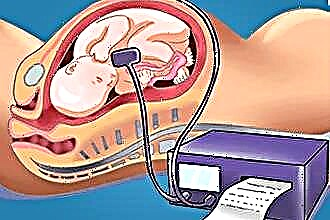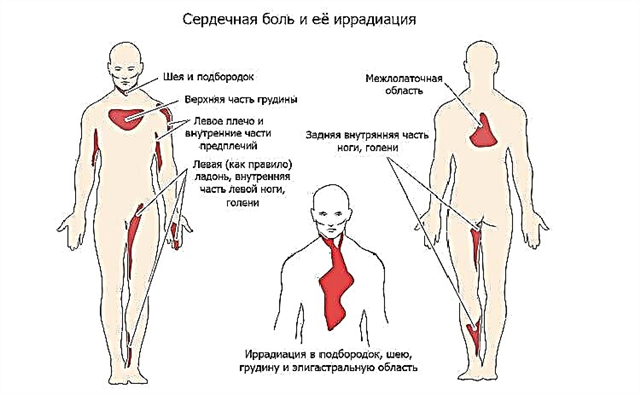In the eyes of a person, certain processes take place that ensure normal vision and well-being. If you do not regularly examine the organ of vision, then you can miss the development of pathology, which will lead to blindness.
Eye pressure, symptoms and treatment of changes in this indicator, as well as prevention are the prerogative of the ophthalmologist. Stabilizing these indicators is very important to maintain normal visual function.
What is eye pressure?
 In the eyes, there is a constant movement of fluid, which is delivered to the ocular cornea, and later flows out. If this process of outflow and inflow of fluid is upset, then there is an increased eye pressure, or decreased. It is necessary to react to such a pathology immediately, since a deviation from the normal values of this index can lead to complete blindness.
In the eyes, there is a constant movement of fluid, which is delivered to the ocular cornea, and later flows out. If this process of outflow and inflow of fluid is upset, then there is an increased eye pressure, or decreased. It is necessary to react to such a pathology immediately, since a deviation from the normal values of this index can lead to complete blindness.
An increase in intraocular pressure must be treated in a timely manner, only then it is possible to completely get rid of the disease. There are medications, the action of which allows you to bring this indicator back to normal.
The causes of pathology often lie in external factors, when a person himself provokes high eye pressure. However, there are cases of such a problem appearing due to the influence of another ailment. Only an ophthalmologist is able to find out the true factors affecting the pressure of the fundus.
Non-pathological reasons:
- Eye injuries. In case of injury, the drainage canal is blocked, after which symptoms of high ocular pressure appear. Bleeding that occurs after injury to the inner lining of the eye is the cause of this.
- Improper nutrition. When salt is consumed in large quantities, a person experiences fluid retention in the body, in addition, such a situation is often provoked by alcoholic beverages. Congestion directly affects the level of pressure in the eyes.
- Inflammatory eye diseases. Often, doctors diagnose a patient with uevit, a disease that blocks the drainage canal, which causes high eye pressure in women and men of all ages.
- Excessive physical activity. With strong physical activity, an increase in intraocular pressure occurs, which is considered normal and normalizes on its own when a person is resting.
- Primary glaucoma. By itself, this disease can provoke increased eye pressure, but glaucoma can also become the reason why this index has become high. These two ailments can be interrelated in adults.
- Nervous disorders and sleep disturbances. Insomnia and nervousness can negatively affect the visual organ, which will be expressed by a high pressure index.
- Medications. The doctor, when examining a patient who has symptoms of increased eye pressure, will find out what drugs this person is constantly taking. There are certain medications that affect this index. Glucocorticoids and antidepressants can impair visual function and the condition of the eyes themselves.
- Being at the computer for a long time. When watching TV for a long time or sitting at a computer monitor for a long time, the eye fluid will stagnate, which will increase the level of pressure in the eyes.
This condition can be the reason for an increase in this index, so it is important to undergo a thorough examination before prescribing therapy. Fluid retention in the body is the main factor provoking this ailment.
Pathological causes:
- diabetes;
- diseases of viral origin;
- hypertension;
- hypotension;
- migraine;
- cataract;
- glaucoma.
In addition, kidney disease and problems in the cardiovascular part of the body also affect intraocular pressure, the symptoms of which people often confuse with manifestations of other pathologies.

Symptoms
Signs of high pressure in the eyes may not appear at all if the tonometer reading is slightly higher than normal. Indicators that vary in the range of 17-27 mm Hg are considered normal. pillar. If this index is significantly higher, then the person will experience very unpleasant sensations, similar to the symptoms of hypertension.
Manifestations:
- intense headache, manifested more often in the temporal region;
- pain when moving the eyeballs;
- decreased performance due to constant fatigue;
- inability to read words written in small print or watch TV;
- redness of the eyes;
- cloudy eyes;
- pain and heaviness in the eyeballs.
If increased eye pressure is observed for a long time, then it becomes difficult for a person to work and perform normal activities.
Symptoms can be excruciating, and severe headaches prevent a normal life. Such manifestations serve as a signal for an immediate visit to an ophthalmologist, because the situation becomes dangerous.
We must not forget about the decrease in this indicator. If the intraocular pressure, the symptoms of which are practically not felt, is less than normal, then the signs are difficult to see. In such people, the eyeballs noticeably sink, since the level of fluid that washes the cornea is reduced. Relatives notice that the patient's eyes have become dull, the live shine has disappeared. A prolonged period of low eye pressure can lead to atrophic changes in the tissue of this organ, and, as a consequence, to a complete loss of visual function.
Symptoms and treatment of this pathology can be different, and if the disease progresses, then its symptoms will be brighter, and therapy is more difficult. If an ailment is detected at an early stage, then it is much easier to eliminate it, an advanced degree of the disease can seriously impair vision, and the treatment will be long and not always effective.
Diagnostics
Treatment of eye pressure cannot be carried out without diagnostic measures. Only by identifying the causes and manifestations can the correct therapy be prescribed to such a patient. There are several ways to measure this index, because without accurate indicators, the ophthalmologist will not be able to pick up pills for this disease.
Measurement methods:
- Palpation. Not all doctors can use this technique in practice, since you need to know the features of such a measurement. The doctor sits the patient with his back to him, asks to lower his gaze to the floor and close his eyes in this position. The specialist presses his finger on the patient's eyes, finding out how elastic they are. If the elasticity is strong, then there is an increased eye pressure, with weak elasticity this indicator is below normal.
- Measurement using a Maklakov tonometer. This tool is lightweight, about 5-15 grams, and consists of 2 cylinders with a flat bottom. The patient lies down on the couch, and the doctor covers the bottom of the instrument with special paint, having previously treated the eyeball with an anesthetic. The cylinder is placed on the open eye, on the cornea itself, and released. After that, the doctor removes the instrument and makes an imprint of the stained bottom on a paper sheet. There is a special measuring scale, which determines the increased eye pressure or a reduced value.
- Measurements with a pneumotonometer. This apparatus is a state-of-the-art instrument for measuring ocular pressure readings. The patient sits on a chair in front of the doctor with wide eyes, and the doctor directs a stream of compressed air into the eyeball, directly into the center of the cornea. The device provides a rhinestone with the result of such a measurement, and anesthesia is not required.
Today, the measurement of this indicator using a tonometer is not carried out in all medical institutions, due to the cost of this instrument.There are several other ways to obtain this data, but they are used less often.
Treatment
Only an ophthalmologist knows how to treat eye pressure, you cannot drink drugs without a specialist's appointment, this can only worsen the situation. Drug therapy for this ailment is considered ineffective or is used at the preliminary stage of treatment.
Today, drops are considered effective for eye pressure. Any problem such as a decrease or increase in the index can be eliminated with this medication. In addition, these medications help to stop the development of glaucoma. Doctors subdivide the drops used into several types.
Types of medicines:
- Means to slow down the formation of excess fluid in the inner tissues of the eye.
- Drugs that can increase the outflow of ocular fluid.
- Combined medications.
Drops from eye pressure not only help to reduce this indicator, but also nourish the tissues of this optic organ, improve vision.
Varieties of drops
| Medication type | Action | Side effects |
|---|---|---|
| Beta blockers | May help reduce the production of eye fluid. The therapeutic effect occurs within half an hour after application to the eyeball. | Decreased heart rate, bronchospasm. |
| Cholinomimetics | Increase the outflow of fluid by contracting the muscles of the eye. | Pain in the temples, forehead, brow arches. Constriction of the pupils. |
| Carbonic anhydrase inhibitors | Reduces the synthesis of ocular fluid. | Use with caution in people with renal pathologies. |
| Prostaglandins | Increase the outflow of fluid in the inner tissues of the eyes. The therapeutic effect occurs 2 hours after application. | Redness of the eyes, active growth of eyelashes. |
 In addition to pharmaceutical preparations, there are folk remedies for eye pressure, but they must be used extremely carefully and only after consulting a doctor.
In addition to pharmaceutical preparations, there are folk remedies for eye pressure, but they must be used extremely carefully and only after consulting a doctor.
Folk remedies
With the help of folk remedies, you can not only stabilize the pressure in the eyes, but also replenish the body's vitamin reserves, as well as improve metabolism.
Facilities:
- Rinsing with aloe juice. Prepare a solution of 6 sheets of aloe plant, chopped and a glass of boiling water, pour the leaves and boil for 5-6 minutes. Cool and rinse the eye area with the resulting product 5-7 times a day. Make a course of such therapy, lasting 2 weeks, after which you need a break for the same period.
- Tomato juice. Drink this delicious medicine 1/4 cup at a time, 4-5 times a day. The course of treatment is 21 days, after which you need to take a break and start therapy again.
- Honey and celandine. Take both ingredients in equal parts, mix and cook until thick. Put it to cool and apply this product to the eyes, applied to a napkin.
- Nettle and lily of the valley flowers. For the infusion, you need 1 glass of chopped nettle and 2 small spoons of lily of the valley flowers. Mix the ingredients and pour over 2 cups of room temperature water. Leave to infuse overnight. Add 2 teaspoons of baking soda to the mixture in the morning. Use the product as an eye lotion.
The list of folk recipes for this ailment is huge, but you need to carefully analyze the effect of the components of such home remedies.
What to do with high intraocular pressure? Only professional help is needed for such patients; it is not worth solving this problem on their own. After consulting a doctor, it will become clear to a person what medicines he needs, and what folk remedies can alleviate his condition.



